THE CONTROVERSIAL LEGACY OF THE B24 LIBERATOR BOMBER
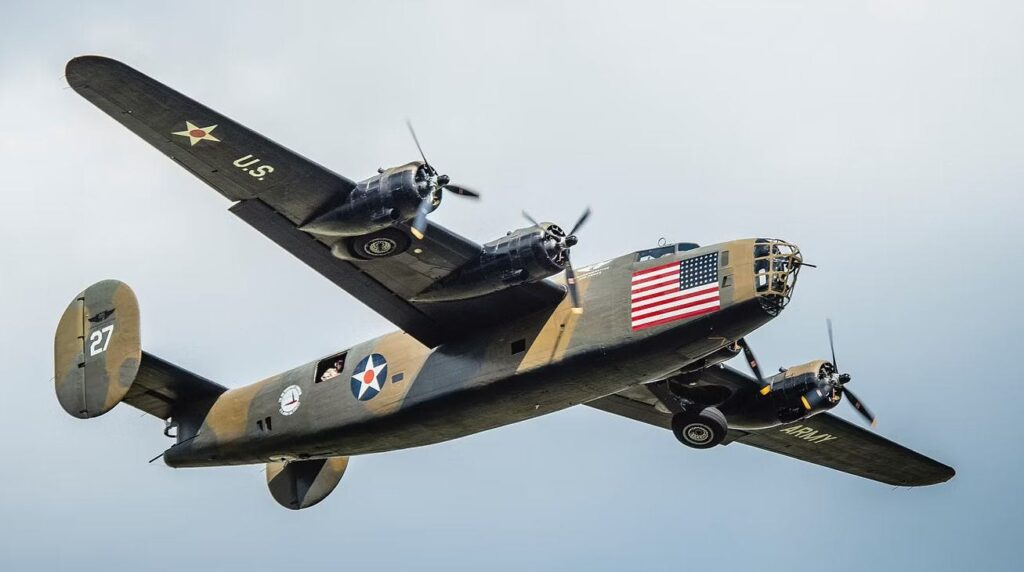
B24 Liberator: A Troubled Birth for a Wartime Necessity
When the B24 Liberator heavy bomber first took to the skies in World War II, it carried the weight of a nation’s hopes on its wings. The United States desperately needed a long-range, high-speed bomber capable of striking deep into the heart of Nazi Germany and Imperial Japan. On paper, the B24 bomber seemed perfect for the job, until it was later nick named: “the flying coffin”.
Designed by Consolidated Aircraft, the B-24 boasted innovative features for its time. A cutting-edge shoulder-mounted Davis wing promised to reduce drag by 15%. This enabled the bomber to fly higher and faster than its predecessor, the vaunted B-17 Flying Fortress. Mighty Pratt & Whitney engines, fitted with turbo-superchargers, gave the Liberator a blistering top speed of 310 miles per hour. This gave a significant upgrade from earlier models.
High Expectations
The U.S. military had high expectations for their shiny new warbird. They envisioned the B-24 as a true “Liberator,” a silver bullet to free the world from Axis tyranny. But as the battle-tested Flying Fortress already proved, translating lofty performance specs into real-world success took more than an engineering degree and a few wind tunnel tests. Sometimes, fatal flaws only surfaced in the unforgiving crucible of war.
And so it was with the B24 Liberator. Amid the frenzied rush to deploy the bomber against Hitler’s Fortress Europe, warning signs emerged that the aircraft’s radical redesign concealed deadly deficiencies. Ominous rumors swirled of a “Flying Coffin” haunting Allied aircrews. But with the outcome of the war hanging in the balance, the Liberators kept rolling off the assembly line and into harm’s way.
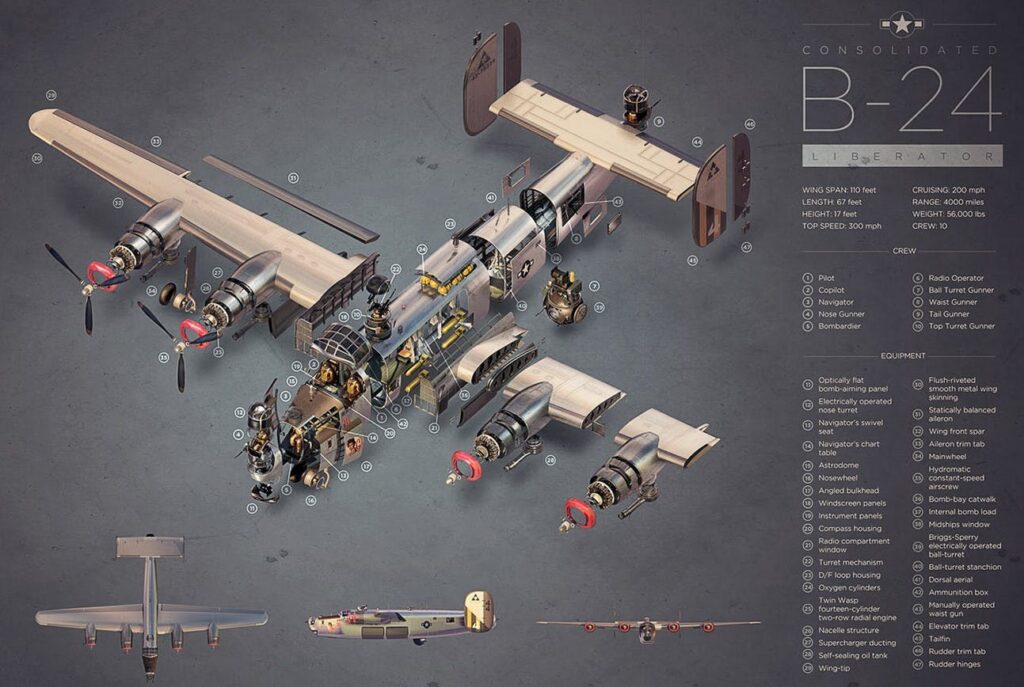
Death Trap Over Germany
The B-24’s vaunted high-altitude performance quickly proved a double-edged sword in the flak-filled skies above the Third Reich. That sleek Davis wing, initially hailed as an aerodynamic breakthrough, demonstrated an unnerving propensity to shatter under the relentless onslaught of German anti-aircraft fire.
Flak, the unseen killer of bomber crews, revealed the B24 Liberator as tragically vulnerable compared to the rugged B-17. Puffs of inky black smoke belched from Nazi 88mm guns, sending jagged metal shards ripping through the Liberator’s wings and fuselage. Gaping holes appeared as if by macabre magic, turning once graceful aircraft into flying colanders spilling precious aviation fuel and even more precious blood.
Worse still, the Liberator’s service ceiling of 28,000 feet left it nearly a mile closer to the earth than a B-17 flying at maximum altitude. This meant the B-24 spent more time in the heart of the flak envelope, the optimal detonation range for German shells set to explode at 25,000 feet. Luftwaffe fighter pilots, hungrily prowling for crippled bombers, knew they had only to follow the smoke trails to find struggling Liberators limping vainly for home.
Deadly Design Flaws
But the true nightmare began when those battered warbirds inevitably succumbed to battle damage. With the aircraft mortally wounded, pilots frantically issued the dreaded bailout order – only to discover the B-24 had one last cruel trick to play. Unlike the B-17 with its multiple hatches, the Liberator had only a single entry and exit point located in the tail, far removed from the crew positions in the nose and bomb bay.
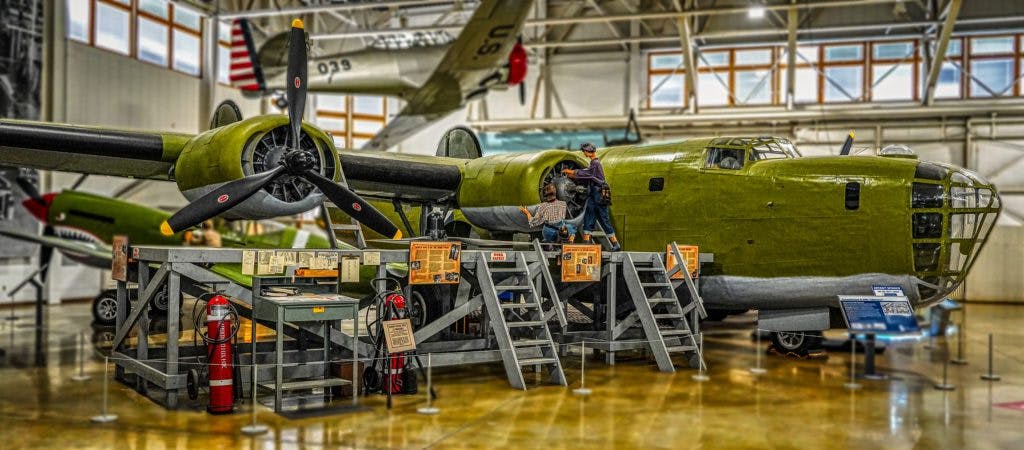
In an emergency, this solitary life raft became a one-way death trap. Panicked airmen fought against g-forces, desperately crawling and clawing their way towards that distant hatch while their doomed ship corkscrewed earthward in a final, smoking spiral. Many never made it out alive.
Between flak, fighters, and that fatal design flaw, the B24 Liberator truly earned its macabre moniker as the “Flying Coffin.” Yet incredibly, American factories continued churning out thousands of these flawed aircraft. The staggering statistics behind that effort, and the brave men who flew the Liberator into the jaws of death, add another astounding chapter to the bomber’s troubled tale.
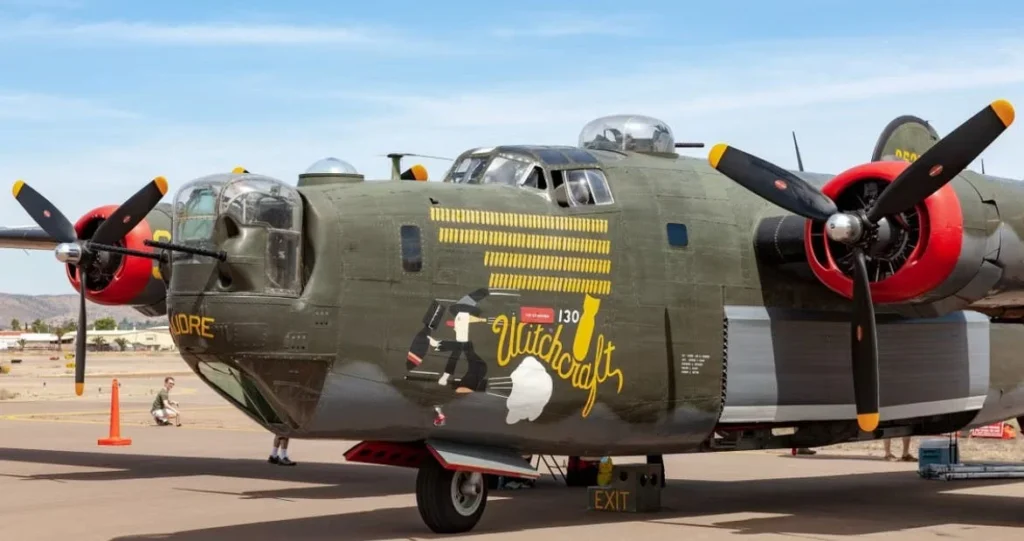
One Liberator Per Hour to Crush the Axis
Though reviled and feared by many of the aircrews who flew them, the B-24 Liberator still holds the distinction of being the most mass-produced American military aircraft of all time. At peak output, the United States aviation industry delivered a staggering 650 Liberators per month to the front lines. The Ford Motor Company’s colossal Willow Run plant in Michigan, built specifically for B24 Liberator production, famously assembled one Liberator per hour at the height of its manufacturing frenzy – a mind-boggling feat of industrial might.
By the end of the war, a total of 18,188 B-24s had flown into battle for the U.S. Army Air Forces and Navy, with Willow Run alone accounting for 8,685 of those aircraft. To put those numbers in perspective, the United States built more B-24s than any other airplane in history – more than the total number of B-17s, B-29 Super fortresses, and P-51 Mustangs combined.
Pivotal Role in Victory
Despite its design deficiencies, this overwhelming aerial armada played a pivotal role in securing Allied victory. Intrepid Liberator crews flew treacherous missions from Europe to the Pacific, braving heavy flak and fighter attacks to obliterate Nazi U-boat pens, Japanese supply lines, and Axis industrial targets. Though the human cost was grievous, with tens of thousands of airmen lost, the B24 bomber’s contribution to defeating Hitler and Hirohito is undeniable.

The staggering Liberator production statistics are even more impressive considering the challenges overcome by Willow Run’s workforce. Hastily constructed in 1941 to serve as a dedicated B24 Liberator factory, the sprawling facility transformed a rural Michigan farming community of just 200 people into a humming industrial beehive employing over 42,000 men and women at its wartime peak in 1943.
In a harbinger of the United States’ post-war industrial decline, Willow Run’s furious pace slowed to a crawl shortly after V-J Day. Though briefly used to house returning veterans, the factory fell into disuse after the war. The workers who had sacrificed so much to turn the tide of battle largely returned to their former lives, their momentous achievement slowly rusting into memory. Today, the Yankee Air Museum in Willow Run Airport stands as a modest tribute to the everyday Americans who helped build the arsenal of democracy.
A Legacy Written in Blood and Courage
The B24 Liberator’s complex combat record was ultimately defined not by rivets and aluminum, but by the skill and valor of the men who flew them. One of those men was Lieutenant Phillip Ardery, a B-24 Squadron Commander, who chronicled his harrowing experiences in the memoir “Bomber Pilot: A Memoir of World War II.”
Ardery’s gripping accounts capture both the Liberator’s fatal flaws and the raw courage required to face them. In one chilling anecdote, he describes a formation of B24 bombers shredded by flak during a raid on the Ploesti oil refineries in Romania. “The [flak burst] went off slightly above and behind the plane on our right. I could see large holes open up on the wing and the right wing appeared to fold up and the plane rolled over on its back,” Ardery writes.
Heroic Airmanship
Yet in the same passages, Ardery also recounts acts of astonishing airmanship that snatched life from the jaws of death. Describing the miraculous flight of a crippled B24 bomber piloted by his friend Robert Lee Wright, Ardery marvels at Wright’s unshakable sangfroid in the face of impossible odds.
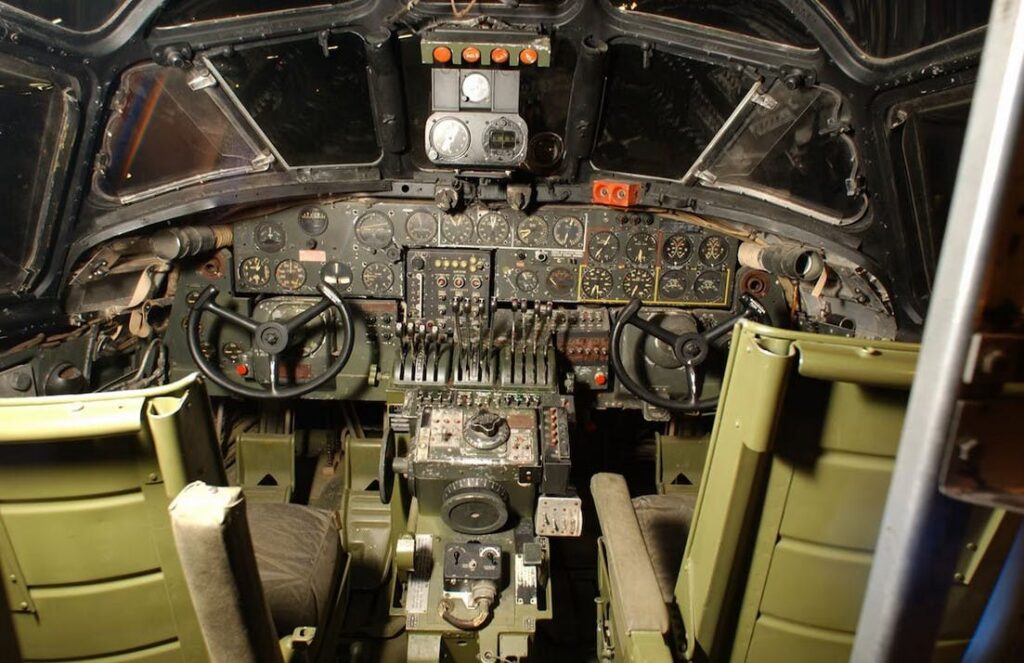
“[Wright] ordered all guns and ammunition thrown overboard but lost another engine. Since there was no way to get to England, he headed for the Island of Sicily. Now we had a real miracle. The plane held together. He landed with only one engine on a small fighter strip just behind enemy lines as the American Army arrived to capture the field. The entire crew was safe,” Ardery writes.
Such stories capture the essence of the B24 bomber’s legacy. Though the “Flying Coffin” was a flawed, unforgiving machine, it was nevertheless flown into legend by men of unflinching resolve and skill. The fact that the United States manufactured the Liberator in unprecedented numbers despite its glaring deficiencies testifies not only to the desperate urgency of the war effort, but also to the indomitable spirit of the Greatest Generation.
Pivotal Role in Vanquishing the Axis Menace
Though it never fully displaced the B-17 Flying Fortress as America’s iconic World War II bomber, the B-24 Liberator still played a pivotal role in vanquishing the Axis menace. Even as its basic design flaws persisted, modified variants like the Navy’s PB4Y-2 Privateer introduced significant improvements that kept the Liberator relevant through the end of the war and beyond. By 1944, a PB4Y-2 could carry 12 .50 caliber M2 Browning machine guns in six turrets, a fearsome increase from the B-24’s original 10-gun load out. More efficient engines and an enlarged fuselage transformed the Privateer into a lethal submarine hunter, wreaking havoc on German U-boats in the Battle of the Atlantic.
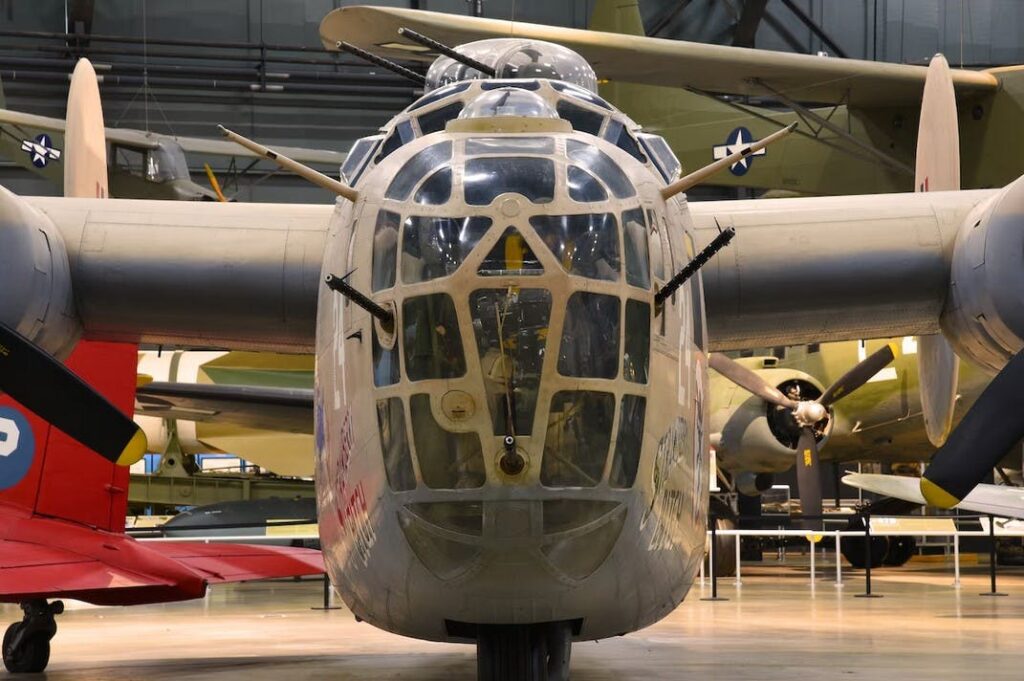
Legacy of the Flying Coffin
These late-war modifications, however, amounted to Band-Aids over the B-24’s inherent structural weaknesses. Though the Liberator faithfully served until the end of hostilities, its design was essentially a dead end. After World War II, the U.S. military pivoted to more advanced four-engine bombers like the B-29 Superfortress and B-36 Peacemaker, leaving the Liberator as a relic of a vanished era.
Today, only a handful of B-24s survive as museum pieces, their once gleaming airframes now scuffed and weathered with age. Yet the ghosts of their gallant crews still whisper from those battered cockpits, paying eternal tribute to the 210,000 Americans who risked their lives aboard the “Flying Coffin.”
The B-24 Liberator will forever remain a symbol of the United States’ colossal industrial effort to defeat the Axis, and of the daring young aviators who defied the odds to bring Hitler and Hirohito to heel. Though the Liberator never fully shed its fearsome nickname, the brave men who flew them carved a legendary place in history through skill, grit, and sacrifice. In the end, the B-24’s enduring legacy isn’t one of rivets and aluminum, but of the unbreakable human spirit that triumphed over its imperfections.



